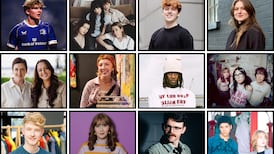Puzzling isn't it, what's happening in Korea? No, sorry, I don't mean the question of whether the combined might of Paddy Power and Dennis Rodman can really succeed in reuniting North Korea with the West.
I'm referring to reports from South Korea that men there have taken to wearing lipstick. Not just lipstick, but eyeliner, mascara and foundation – the whole exfoliated and polished shebang. South Korean men reportedly spend €675 million a year on skincare, about a fifth of the total global spend by men.
At least as much again is being diverted by cosmetics companies into working out what it is about South Korean men that makes them so readily persuaded of the joys of a good BB cream, while their counterparts elsewhere still regard lip balm as suspiciously girly.
It’s an interesting question, and not just if you’re head of expanding markets for L’Oréal.
Women have always been a depressingly easy target for cosmetics companies. They tell us we’re falling down in some hitherto unexamined area of the human body, and we obediently trot off to get our eyebrows tattooed, to have our placentas turned into capsules for daily ingestion, or to buy the latest serum made from seagull excrement.
I'm being facetious. We don't literally do these things. We leave all that to Kim Kardashian. But enough of us are sufficiently insecure about how we look to ensure selling slap remains a €300 billion-€400 billion global industry.
Marketing cosmetics is about creating insecurities. If you thought about it long enough, you could probably come up with a new wonder product yourself. Just focus on an area of your body you’ve never really considered before, and then invent a product or procedure to “fix” it. Your big toe, for instance. Oh. I just googled it, and big-toe corrective surgery already exists. Suffering from an ungroomed vulva? You don’t think so? Can’t be too careful; there’s a beauty treatment for that, the “vajacial”. Dogged by sweaty breasts? No? Well, best treat yourself anyway to some of that new specially formulated underboob deodorant.
The problem for the beauty industry is that it is running out of female insecurities to exploit, and so attention is being turned to the other 50 per cent. Men have traditionally proven a much tougher sell, mainly, I suspect, because society has not conditioned them to be so focused on their physical failings. In fact, the male grooming industry is suffering a minor crisis, brought on by the twin effects of Movember and George Clooney. Gillette has responded to the resulting decline in global razor sales by announcing that it plans to diversify into a whole new product line: razors for "the chin down". Good luck with that.
But there are alarming signs that the South Korean effect might be spreading. According to an online survey of British men last year, one in 10 secretly wears make-up, while one in three uses fake tan. The cosmetics brands Tom Ford and Marc Jacobs recently launched dedicated make-up lines for chaps. And it has been whispered that Harry Styles sported lipstick to the One Direction movie premiere.
Take it from me, guys: when we said we wanted equality, the chance to compare pore sizes and battle you for control of our eyeliner wasn’t quite what we had in mind.
If the majority of men remain stubborn skincare refuseniks, there's another as yet unchartered market. A recent Mintel report pointed out the opportunities for marketing cosmetics to five- to 17-year-olds. Yes, you read that right. Five. Now that's a scary thought.
THE NEW PUBERTY: ALARMING CHANGES
The global drop in the average age of puberty is one of the factors cited in a recent Mintel report as a potential angle for expansion for cosmetics companies. There are so many troubling things going on here, it's difficult to know where to start. In 1860, American girls typically didn't begin puberty until they were 16. In the 1990s, puberty began at 12.5; today it's 10.5. Similar trends have been seen for boys, although they hit puberty one year later. A range of possible explanations have been offered: nutrition, obesity, hormones in meat, endocrine disruptors in the environment. The bottom line is we don't know. But if it continues, children experimenting with make-up will be the least of parents' worries.










